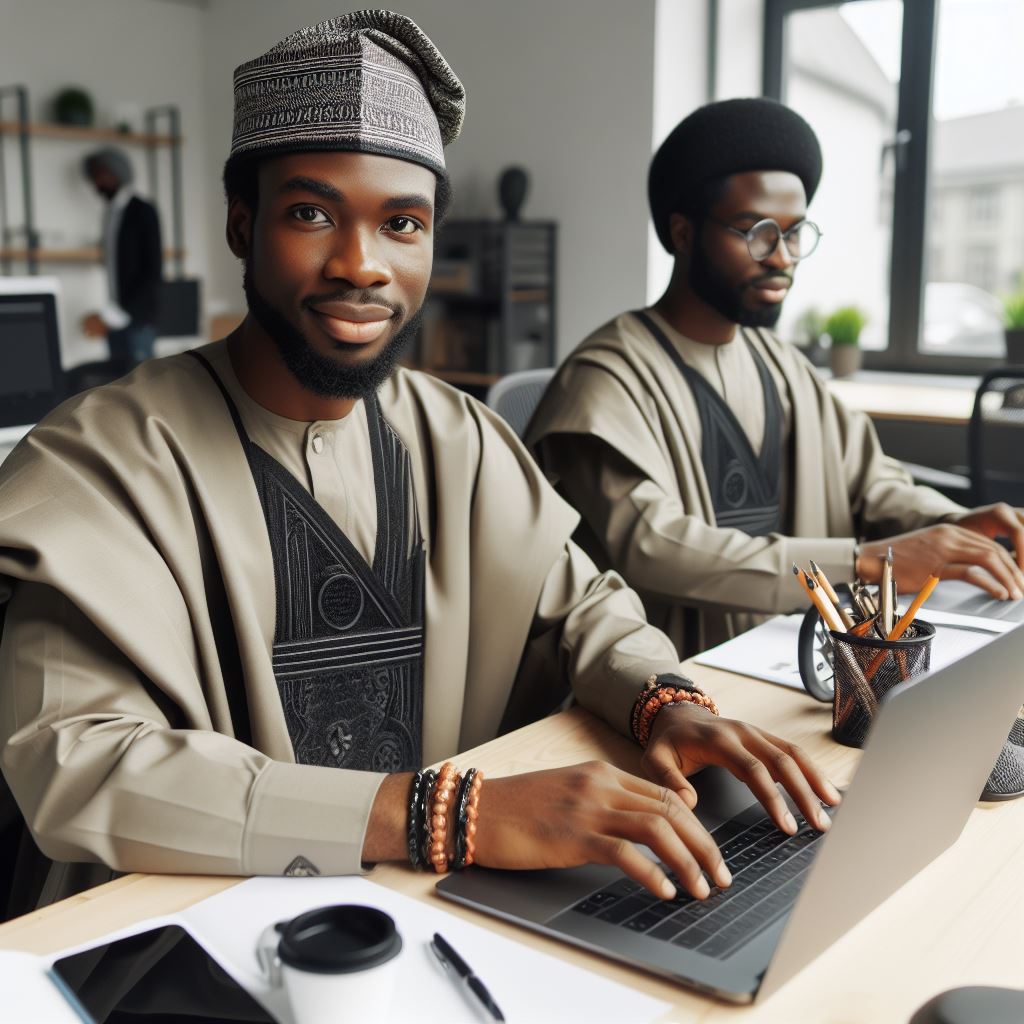Introduction
Graphic design plays a crucial role in today’s digital world. In this article we will look at Graphic Design Freelance Project Ideas
Its importance cannot be overstated. With the growing popularity of freelancing, more and more graphic designers are opting for freelance projects.
In this blog post, our purpose is to provide freelance project ideas specifically for graphic designers.
The field of graphic design has witnessed a significant boom in recent years. As businesses understand the power of visual communication, the demand for skilled graphic designers has skyrocketed.
This has led to an increase in the number of freelance graphic designers who offer their services to clients around the world.
Freelancing in graphic design offers numerous advantages. It allows designers to have control over their time, choose their clients, and work on projects that align with their interests and expertise.
Lastly, it provides the flexibility to work from any location and avoid the constraints of a traditional 9-5 job.
In this blog post, we aim to inspire graphic designers with fresh project ideas that they can pursue as freelancers.
Whether it’s logo design, branding, web design, or illustration, we will explore various project possibilities and offer tips on how to attract clients and deliver outstanding results.
By presenting a diverse range of freelance project ideas, we hope to ignite creativity and help graphic designers thrive in their freelance careers.
Whether you are a seasoned professional or just starting out, this blog post will provide you with valuable insights and inspiration to take your graphic design business to new heights.
Logo Design Projects: Unlocking the Power of Visual Identity
Logos serve as the visual representation of a business or brand, making them an essential element in today’s competitive market.
A well-designed logo has the power to convey a brand’s identity, values, and message to the target audience. Hence, logo design projects hold immense significance in the world of graphic design.
Potential logo design projects
When considering potential logo design projects, it’s essential to identify the different contexts in which logos are needed.
Startups, for instance, often require a logo that can establish their brand identity right from the beginning. In this scenario, the logo needs to reflect the unique vision and positioning of the new business.
Rebranding is another area where logo design projects come into play. As businesses evolve and adapt to new market trends, they may require a fresh logo design to represent their transformed brand image.
Personalized Financial Consulting – Tailored for You
Get a custom financial plan made just for you in 1-3 days. Clear strategies, actionable steps, and unlimited revisions.
Get StartedA well-executed rebranding logo project involves understanding the changes in the business and crafting a logo that aligns with the revitalized brand ethos.
Event logos are yet another exciting avenue for freelance graphic designers to explore.
From conferences and festivals to product launches and fundraisers, numerous events seek distinctive logos to promote their initiatives effectively.
The challenge lies in creating a logo that captures the essence of the event and entices the target audience to participate.
Understanding the client’s brand identity and message
Regardless of the specific logo design project, one crucial aspect remains constant: understanding the client’s brand identity and message.
The logo must be a true representation of the brand’s core values, while also resonating with its target audience.
This can only be achieved by thoroughly comprehending the client’s brand strategy, target market, and unique selling proposition.
To achieve this understanding, it is advisable to conduct thorough research about the client’s industry and competitors.
This will provide valuable insights into the visual language commonly used in that sector, enabling the designer to create a logo that stands out from the crowd.
Furthermore, communication with the client is vital to ensuring a successful logo design project.
Regular meetings or consultations allow designers to grasp the client’s preferences, expectations, and any specific elements they wish to include in the logo.
Through effective communication, designers and clients can collaborate seamlessly, resulting in a logo that both parties are satisfied with.
As a freelance graphic designer, it is essential to develop a portfolio that showcases expertise in various logo design projects.
By highlighting a diverse range of logos, including those for startups, rebranding, and events, potential clients can see your versatility and adaptability.
Unlock Your Path to Financial Freedom
Personalized savings and investment strategies tailored to your financial goals. Let's help you take control of your future with a plan designed just for you.
Get StartedGenerally, logo design projects are integral to building strong brand identities and effectively communicating a business or brand’s message.
Through meticulous research, understanding the client’s brand identity and message, and effective communication, freelance graphic designers can excel in creating impactful logos.
So, dive into the realm of logo design projects and unlock the power of visual identity!
Web Design Projects
In the thriving realm of graphic design, freelancers are witnessing a remarkable surge in demand for diverse web design projects.
The digital landscape’s evolution underscores the critical need for adept designers capable of crafting engaging and functional online experiences.
Let’s delve into the dynamic category of web design projects and explore the multifaceted demands and opportunities it presents.
Responsive Websites
As the proliferation of devices continues, the call for responsive websites amplifies.
Designers are tasked with creating interfaces that seamlessly adapt to varying screen sizes, ensuring optimal user experiences across platforms.
E-Commerce Platforms
The eCommerce boom has ushered in a new era of design challenges and opportunities.
Crafting intuitive interfaces for online shopping experiences requires a delicate balance between aesthetic appeal and user-friendly functionality.
Portfolio Sites
Portfolio websites, once static displays of work, have transformed into dynamic showcases of skills. Freelancers now have the chance to present their expertise in a visually compelling and interactive manner.
Importance of User Experience (UX)
The heart of successful web design lies in prioritizing user experience. Every click, scroll, and interaction should be thoughtfully crafted to enhance user satisfaction and engagement.
Functionality as a Priority
Aesthetics alone do not suffice; functionality is equally paramount. Ensuring that the website not only looks good but also functions seamlessly is the hallmark of effective web design.
Integrating Design Trends
Staying attuned to design trends is imperative. From bold color schemes to innovative navigation, incorporating the latest trends ensures that web designs stay relevant and captivating.
Take Control of Your Debt Today
Struggling with debt? Get personalized strategies to pay off your debts, negotiate with creditors, and rebuild your credit. Your path to financial freedom starts here.
Get HelpInteractive Elements
The demand for interactive elements is on the rise. Features like animations, micro-interactions, and engaging multimedia content contribute to a more immersive user experience.
Mobile-First Approach
With mobile usage surpassing desktop, adopting a mobile-first approach is non-negotiable. Designs should be crafted with mobile users in mind, ensuring a fluid and enjoyable experience on smaller screens.
Accessibility Considerations
Designing for inclusivity is gaining prominence. Considering accessibility features ensures that the website caters to users with diverse needs, promoting an inclusive online environment.
Therefore, the burgeoning demand for web design services in the freelance graphic design space unveils a spectrum of exciting opportunities.
Responsive websites, eCommerce platforms, and portfolio sites represent just a few facets of this dynamic landscape.
For freelancers, the key lies not only in meeting these demands but in surpassing them, creating digital experiences that captivate, function seamlessly, and leave a lasting impact.
As the graphic design community navigates the evolving terrain of web design, it’s not just about creating visuals; it’s about sculpting immersive online journeys that resonate with users in Web Design Projects.
Read: Writing Jobs: Crafting Winning Proposals
Social Media Graphics Projects
Social media graphics play a significant role in today’s digital landscape, benefiting both businesses and influencers.
With the constant evolution and dominance of social media platforms, visuals have become a powerful tool for communication and brand promotion.
We’ll examine social media graphics’ relevance, offer ideas for diverse graphics, and stress understanding target audience and platform-specific design.
The Relevance of Social Media Graphics for Businesses and Influencers
Social media platforms like Facebook, Instagram, Twitter, and LinkedIn have millions, if not billions, of active users.
These platforms have become virtual marketplaces where businesses and influencers can connect with their target audience.
However, with the constant flow of content, attention-grabbing graphics are essential to stand out from the crowd.
Integrating social media graphics into marketing strategies helps businesses and influencers convey their messages effectively.
A visually appealing graphic can quickly capture attention, convey information, and evoke emotions.
Whether it’s promoting a product, sharing an announcement, or increasing brand awareness, social media graphics have the power to create a lasting impact on the digital audience.
Ideas for Creating Social Media Graphics
- Infographics: Infographics are a popular visual tool for presenting complex information in a simplified and visually appealing manner. Businesses can create infographics to showcase industry statistics, explain processes, or share educational content.
- Cover Photos: Impressions matter, and cover photos have a significant role in creating a lasting first impression. Designing eye-catching cover photos can help businesses and influencers establish their visual brand identity and set the tone for their social media profiles.
- Promotional Banners: Whether for a sale, a new product launch, or an event, promotional banners are crucial for driving engagement and conversions. Creating visually enticing banners can generate interest and encourage users to click through for more information.
- Quote Graphics: Inspiring quotes resonate with social media users, and businesses and influencers can leverage this by creating quote graphics. Designing visually appealing quote graphics can boost engagement and help share meaningful messages with the audience.
Understanding Target Audience and Platform-Specific Design Guidelines
While creating social media graphics, it’s essential to understand the target audience and tailor designs to their preferences.
Different demographics may respond to different visual elements, colors, and styles. Conducting audience research and staying updated with trends can help create graphics that resonate with the intended viewers.
Moreover, each social media platform has its own design guidelines and optimal image dimensions for various types of graphics.
For instance, Instagram heavily relies on visuals, making it crucial to design graphics that fit the platform’s square aspect ratio.
Understanding these platform-specific design guidelines ensures that the graphics appear as intended and maximize their impact.
Essentially, social media graphics hold immense relevance for both businesses and influencers.
They serve as a powerful marketing tool, allowing effective communication and engagement with the target audience.
Creating various types of social media graphics, such as infographics, cover photos, and promotional banners, can significantly enhance brand visibility and message conveyance.
Additionally, understanding target audience preferences and adhering to platform-specific design guidelines are essential for successful graphic design projects in the realm of social media.
Read: Graphic Design: Pricing Your Work
Learn More: Freelance Writing: Pitching Made Easy
Print Design Projects
The continued relevance of print media in marketing and communication
- Print media maintains relevance by providing a tangible and lasting connection with the audience.
- Tangible materials, such as brochures or business cards, can make a stronger impact than digital ads.
- Print media allows for a more personalized and targeted approach to marketing.
- Some demographics still prefer physical materials, making print media an essential marketing tool.
- Print media offers credibility and trustworthiness, as it is perceived as more established and reputable.
- The physical presence of print media creates a sense of value and permanence.
- Print media can enhance brand recognition and visibility, especially in local communities.
- It serves as a complement to digital marketing efforts and can reinforce messaging across various platforms.
- Print media is particularly effective for reaching older demographics who are less connected to digital platforms.
Print design project ideas such as brochures, flyers, business cards, posters, etc
When it comes to print design projects, the possibilities are endless. Here are some ideas to consider:
- Brochures: Create visually appealing brochures to showcase products, services, or event details.
- Flyers: Design eye-catching flyers to promote special offers, events, or fundraisers.
- Business Cards: Develop professional and memorable business cards that reflect brand identity.
- Posters: Design captivating posters for advertising concerts, exhibitions, or community events.
- Newsletters: Create informative and visually appealing newsletters to update customers or members.
- Packaging: Develop unique packaging designs that capture attention and enhance product appeal.
- Calendars: Design custom calendars to promote businesses or serve as gifts for clients or customers.
- Catalogs: Create visually appealing catalogs that showcase a wide range of products or services.
- Invitations: Design elegant and engaging invitations for weddings, parties, or corporate events.
- Direct Mail: Develop direct mail campaigns using postcards or letters to target specific audiences.
- Magazine Layouts: Create visually stunning magazine layouts to engage readers and highlight content.
- Stationery: Develop branded stationery designs for letterheads, envelopes, and notepads.
Importance of considering print specifications and formats for successful execution
To ensure successful execution of print design projects, it is crucial to consider print specifications and formats.
- Print specifications include factors like paper type, size, color mode, and print quality.
- Understanding the printing process and working closely with printers can help achieve desired results.
- Proper file preparation, including resolution, bleed, and trim marks, is important for accurate printing.
- Utilizing appropriate software tools, such as Adobe InDesign or Illustrator, ensures compatibility with printers.
- Different print formats, such as offset printing or digital printing, have specific requirements and limitations.
- Considering the end use of the printed materials is crucial when deciding on print specifications.
- Proofing the final design before printing is necessary to catch any errors or design flaws.
- Collaborating with a professional printer or print shop can provide valuable insights and recommendations.
- Following industry standards and best practices in print design helps achieve high-quality outcomes.
- Regularly reviewing and updating print specifications ensures adaptation to evolving printing technologies.
In fact, print media remains relevant in marketing and communication due to its tangible nature and ability to create lasting connections with the audience.
Various print design project ideas, such as brochures, flyers, business cards, and posters, offer unique opportunities to engage and promote brands.
Considering print specifications and formats is crucial for successful execution, ensuring accurate printing and desired outcomes.
By incorporating print media into marketing strategies, businesses can effectively reach their target audiences and enhance brand visibility.
Read: Freelance Branding: Make Your Mark

Explore Further: Remote Work Trends in Nigeria 2024
Packaging Design Projects
1. Product marketing and sales
Packaging design plays a crucial role in product marketing and sales. It is not just about creating an attractive container for a product but also about communicating effectively with potential customers.
In this section, we will explore the various opportunities available in packaging design and the importance of understanding branding guidelines and material constraints.
2. Product Packaging Design
One of the most common packaging design projects is creating product packaging.
This involves designing boxes, bags, or containers that not only protect the product but also reflect the brand’s identity and appeal to the target audience.
Product packaging should be functional, visually appealing, and able to convey the product’s benefits and features.
3. Label Design
Labels are an essential part of packaging design, especially for food and beverage products.
Designing labels requires careful consideration of the product’s ingredients, nutritional information, and legal requirements.
Labels should be eye-catching, informative, and able to communicate the brand’s message clearly.
4. Cosmetic Packaging
Cosmetic packaging design offers a unique opportunity to explore creativity and elegance.
Luxurious and visually appealing packaging captivates potential customers, demanding attention for cosmetic products.
Designers must consider the product’s ingredients, textures, and application methods when creating packaging that reflects the brand’s values.
5. Understanding Branding Guidelines
Packaging design should align with a brand’s identity and guidelines. Designers need to thoroughly understand the brand’s personality, target audience, and visual elements.
By following the brand’s guidelines, designers can create packaging that is consistent with the overall brand image and communicates effectively with consumers.
6. Material Constraints in Packaging Design
Packaging designers need to consider material constraints such as cost, durability, and sustainability. Choosing the right materials is vital to ensure the packaging’s functionality and environmental impact.
Designers must strike a balance between aesthetics and practicality while keeping in mind the brand’s values and budget.
7. Customization and Personalization
In today’s competitive market, customization and personalization have become essential to attract customers.
Packaging design offers opportunities for customization through unique shapes, colors, and illustrations.
Personalizing packaging based on specific customer preferences can create a more personalized and memorable experience.
8. Interactive Packaging
Interactive packaging design goes beyond the traditional static design. It incorporates elements that engage consumers, such as QR codes, augmented reality, or hidden messages.
Interactive packaging creates a deeper connection between the consumer and the product, enhancing the overall brand experience.
9. Limited Edition Packaging
Limited edition packaging design can be a great way to create hype and exclusivity around a product. It encourages consumers to make a purchase due to the limited availability of the packaging.
Designers have the chance to experiment with unique designs and materials that resonate with the target audience.
10. Sustainability and Eco-Friendly Packaging
As consumers are becoming more environmentally conscious, sustainability in packaging design is gaining importance.
Designers should consider using eco-friendly materials, minimizing packaging waste, and creating packaging that can be easily recycled or reused.
Sustainability in packaging design not only benefits the environment but also enhances the brand’s reputation.
Collaboration with Manufacturers and Printers
Packaging design projects often require collaboration with manufacturers and printers.
Designers need to have a good understanding of the production process and work closely with manufacturers to ensure the design can be implemented.
Collaboration ensures that the final packaging meets design requirements and is cost-effective.
In summary, packaging design offers a wide range of opportunities for freelance graphic designers. From product packaging to customization and sustainability, there are various avenues to explore.
Designers grasp branding guidelines, material limits, and collaboration, crafting packaging that communicates the brand’s message and elevates the product experience.
By embracing creativity and considering consumer preferences, packaging design can contribute significantly to product marketing and sales success.
Read: Top 10 Freelance Skills in Nigeria 2024
Learn More: Freelance Success: Client Feedback Tips
Conclusion
Concluding our exploration of Graphic Design: Freelance Project Ideas, we emphasize its profound impact on freelancing.
In today’s digital age, graphic design goes beyond aesthetics; it’s a dynamic tool that amplifies brand messaging, captures attention, and fosters connections.
- Freelance graphic design projects offer vast opportunities, from crafting social media visuals to designing eye-catching logos.
- Mastery of diverse projects is crucial, understanding their collective role in enhancing a brand’s identity.
- Graphic design is pivotal in freelancing success, involving strategic communication and positioning freelancers as storytellers.
- It’s not just a skill; graphic design in freelancing is a business strategy influencing consumer perceptions.
- Recognizing this impact opens avenues for freelancers to showcase artistic prowess and contribute significantly to client success.
Shifting focus, freelancers navigate creativity and innovation crossroads, embracing projects from web design to packaging.
This versatility positions them as comprehensive design solutions providers, appreciated by clients seeking a one-stop-shop.
Budding graphic designers, seize freelance opportunities.
The thriving gig economy actively seeks skilled designers. Navigate strategically in freelancing, utilizing its flexibility to curate a career aligned with passions.
Graphic design freelancing is a journey of continuous learning, adapting to industry trends, embracing challenges, and cultivating a mindset of perpetual growth.
Each project is a chance to elevate skills, build a portfolio, and make a lasting mark. Embrace opportunities, challenge the status quo, and let creativity unfurl in the vast canvas of freelance graphic design.




